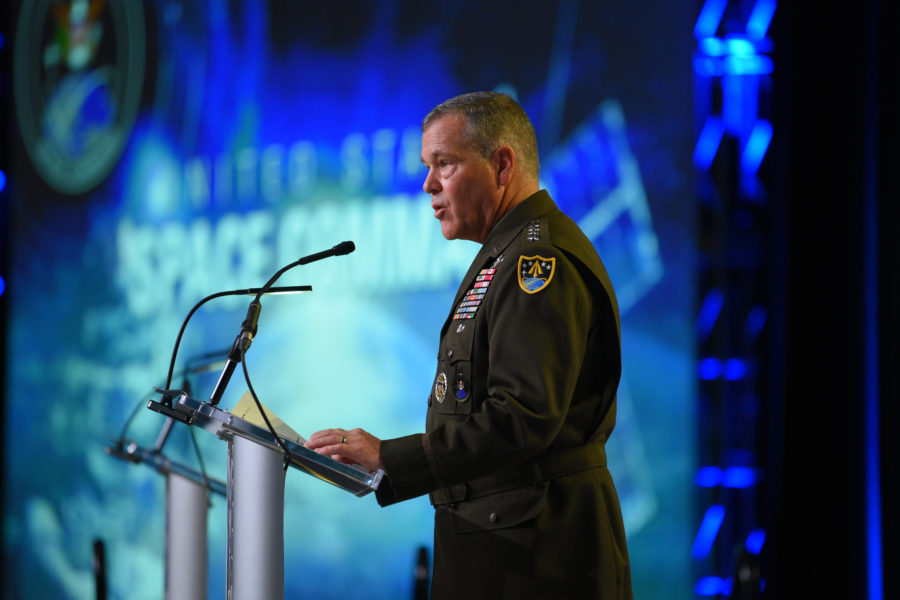The U.S. military plans to “be there” for NASA and commercial providers of “critical” space capabilities as activity picks up on and around the moon.
Commander of the joint-service U.S. Space Command, Army Gen. James H. Dickinson, made the pledge during his speech at the Air Force Association’s Air, Space & Cyber Conference on Sept. 21.
Newly reestablished in 2019 as the military’s 11th combatant command, U.S. Space Command’s “two-part focus” includes “traditional, enduring, no-fail, supporting space functions like position, navigation, and timing, satellite communications, missile warning, and support [of] the human spaceflight operations” at NASA, Dickinson said.
He added that the Artemis program, NASA’s planned lunar exploration campaign, “presents an exciting opportunity” for the command.
“The United States is going back to the moon, and one day we’ll put an astronaut on Mars,” Dickinson said. “U.S. Space Command will be there for NASA in support of those efforts.”
On the other hand, the second, “extremely important” part of the command’s focus—its “supported warfighting function”—is wholly new, Dickinson said. This includes “conducting space operations and protecting and defending U.S., allied, partner, and critical commercial space operational capabilities.”
He didn’t name a specific threat but alluded to “irresponsible behavior of our competitors” generally understood to include anti-satellite weapons tests that create hazardous debris fields in orbit.
In the past few years, the number of satellites in orbit tracked by the U.S. has about doubled, Dickinson said. The trend has given rise to the discipline of space domain awareness, which is one tool the command is sharpening to perform its mission.
Dickinson said that unlike the activities of space situational awareness and space traffic management—“largely passive” and “designed to keep us informed on what’s occurring in space, and when it will occur”—space domain awareness looks at, “more importantly, why it’s occurring.”
Leaders within the command have said that in cislunar space in and around the moon, space domain awareness is its only mission for now.
U.S. Space Command announced in August that it had reached initial operational capability, or IOC, meaning it had “matured to the point where we have strategic effects,” Dickinson said at the time.
At the AFA conference, he elaborated that IOC is “the point where we’ve built a solid enough foundation to pivot to a new objective. It’s where we can credibly claim to be organized and effective for employing both our enduring no-fail support functions to the Joint Force and our supported warfighting functions as well.”
